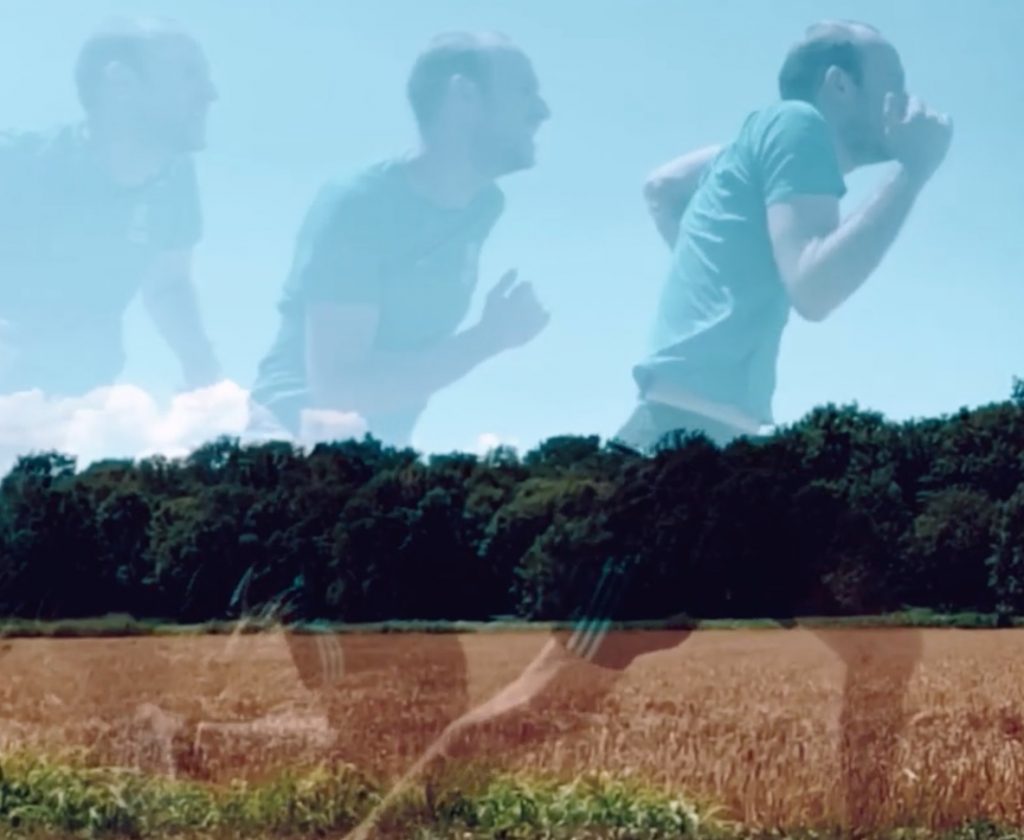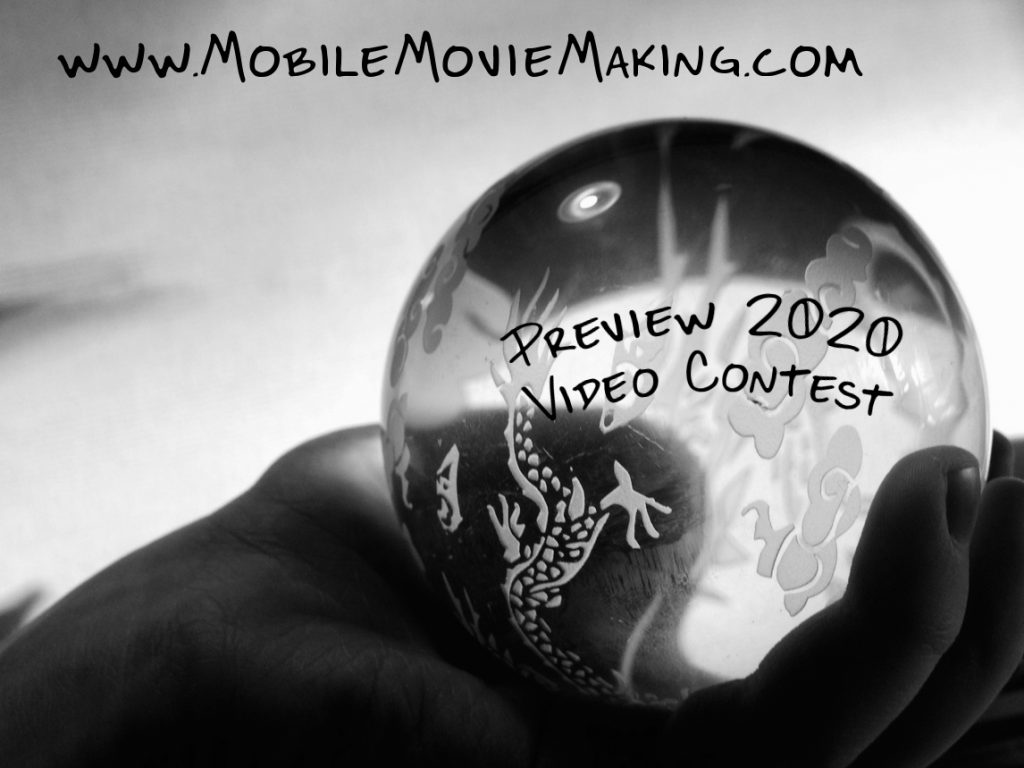Blake Calhoun isn’t the kind of filmmaker who repeats himself. His previous work includes a hard-boiled crime picture (“Miranda“) and a romantic comedy (“First Dance“). Now, with “The Movie Star” Calhoun gives us….something different. We can’t say the genre without giving away the story. Enough to say that “The Movie Star” is a lot of fun, and it demonstrates the director’s mastery of the medium. An interview following the movie explains a few of the amazing tricks that went into this production.
Interview with Blake Calhoun
MMM: Filmmakers have often made movies—for example, “Sunset Boulevard”—about their art. But how did you come up with this particular story?
Calhoun: Had the idea for a while to do a movie about a security guard. It wasn’t originally about guarding a movie set, but I decided to do that because when making no budget projects like this, it’s always best to use what is at your disposal. This was shot in the studio I work out of for my commercial, corporate, and YouTube work so it was a free location. I think it lends production value and credibility to the story.
MMM: How did you plan the shoot?
Calhoun: For the first time in a long while I did not do a shot list or storyboards or any real preproduction in terms of the camera. I knew I wanted the shots in the studio to be bright and more hyper real looking than the shots out in the main building. There I wanted it to be dark and moody, to create a contrast between the two main places in the story. When you watch the movie, I think you’ll understand why.
MMM: Could you say something about your casting process?
Calhoun: I’ve worked with all three of these guys many times over the years in both feature films and short films. In this case, we did kind of an homage to “Miranda”, our previous Filmic Pro short film entry that won their narrative contest in 2018. This is the same cast I used in that film. And so I wrote it with them in mind. Beyond their being good actors I thought they fit the roles well here.
MMM: How long did the shoot take?
Calhoun: One day, just over 12 hours. I thought we could get it done in under 10 hours. But everything always takes longer than you think. In reality we moved pretty quickly. The script was 7 1/2 pages long. That’s quite a bit to cover in one day. And, as I usually do with this type of project, I had a limited two-person crew, same as with “Miranda” although this time I did have a great makeup artist Katherine Erenzo. I brought her on to help with Susana Gibb, who was dressed in a Civil War era gown.
MMM: Could you tell us how you got that eye-catching sign on the building?
Calhoun: That is a visual effect. We shot a background plate taken in the daytime, then in post production we created the sign and made it look like night. The Miata in the parking lot is an homage to “Miranda,” a car prominently featured in that movie.
MMM: Can you talk about the cameras that you shot with?
Calhoun: The FiLMiC Pro contest requires that at least 70% of an entry be shot with a phone. Everything in the studio was shot with an iPhone.A Blackmagic Pocket Cinema 4K Camera was used in the rest of the building: the shots of the security guard at his desk and walking down the hall and then when he first meets the janitor. I chose to shoot on the Blackmagic primarily because I wanted to try out that camera in a narrative film setting. Also, it’s very good in low light and that is something that smartphones struggle with.
MMM: Was it difficult working with two different cameras?
Calhoun: I’ve always liked the challenge of pushing technology. In previous interviews, I’ve mentioned how I’ve shot with pretty much every kind of camera known. But it’s actually true. And so back when Mini DV was a thing I loved trying to make that look bigger, and more cinematic. And the same with affordable HDV formats… Then the early DSLR revolution… etc. But in the end all cameras are just a tool to help tell your story. The main reason I like shooting with smartphones is the convenience, ease-of-use, mobility and now today with the latest greatest devices you can maintain a pretty high level of quality. Is it the same as a RED camera or a Blackmagic camera or DSLR…? No. But for some things that doesn’t matter, and again I like to push technology and with the new phones and some post-production work including color grading etc. you can achieve really excellent results today. And it’s only getting better year-by-year. I’m currently more excited about smartphone video technology going forward than I am traditional cameras for sure.
MMM: A memorable shot here is the light falling on your star.
Calhoun: That’s a mix of live action and visual effects. Obviously. We didn’t really drop a light! But mixing those two was pretty tricky and we had to do lots of takes to get it right. Susana Gibb did an excellent job making it look like something was hitting her in the head. Then everything else was done in post-production. And that’s all Cliff Richhart. In the credits I gave him the title “Hat Juggler“ because he did a lot of different roles on the project like me. He not only helped on the shoot with lighting and sound, but then he did all the visual effects in post. All the dust and smoke and electricity you see are all visual effects. The light on the ground is CGI and then the blood on the ground was added in post as well. We didn’t want to use real blood and risk getting it on her dress, which was a rental. And then combining those with good sound design really makes it all come together and feel what I think is a pretty realistic shot and sequence. Cliff did a great job.
MMM: The actor’s portrayal of being dead is very convincing.
Calhoun: That was mainly her acting except on the extreme close-up. There I had to do a mix of live-action and freeze frame/VFX because it’s hard to lay completely still so there was a little bit of movement in her eyes that I fixed in post. But again, I think it feels pretty believable especially with the smoke moving.
MMM: Did you encounter any unexpected challenge during the shoot? If yes, how did you overcome it?
Calhoun: The smoke machine we used for hazing up the building shots with the security guard made a crazy loud sound. It was new and so hadn’t used it before, but we worked around it and since you only use that before and after a shot the noise wasn’t a dealbreaker, but it was unexpected!
MMM: Tell us about the soundtrack.
Calhoun: The music is by the composer I work with regularly: Damon Criswell. Although these were pre-existing tracks he had done for other movies and I went through a large selection that he provided to me and picked the stuff that worked and I edited it to fit. So it’s original score, but not original for this movie. He just gave me permission to use it. The sound design was primarily done by me using sound effects and with some done by Cliff in the light falling scene. None of it was original Foley though, we used sound effects that you just get online. The key of course is finding the right ones and then layering them to create a realistic atmosphere and environment.
MMM: What about the editing?
Calhoun: As is often the case with these kind of projects it was a bit rushed. We shot and edited and delivered the movie in about a 10 day span. That is rather fast for something like this in my experience. The only thing I would add is that the original cut was over six minutes long and it felt really good at that length. However, the contest required the film to be five minutes or shorter. So I had to make some tough decisions and trim it down. In the end I think the tighter cut works well, but the original script as I mentioned before was 7 1/2 pages so it is a tight edit based on that because typically speaking it’s one minute of screen time per page in a script. The movie I entered into the contest is slightly different than the one here, it’s over five minutes because I put the credits at the end. The festival entry has the credits over the movie but it’s only being seen by the judges at Filmic Pro. I personally prefer to have credits at the end, especially on a short film, but I had to make an alternate version to make it fit within the running time of the contest. In essence the YouTube version is a “Directors Cut“.
# # #
If you want to make your own movie using a smartphone, Blake is offering a new smartphone video & cinematography course that uses “The Movie Star’ and his other projects as demonstrations. It’s all about learning the fundamentals of cinematography for using any kind of camera – and how it works with smartphones along with apps and other accessories. If you click the following link you can save 10% on the tuition: http://bit.ly/SmartCineSave10. He’s also developed a popular FiLMiC Pro guide you can check out here: http://bit.ly/FPGuideTW10



 Previous post
Previous post
 Next post
Next post





